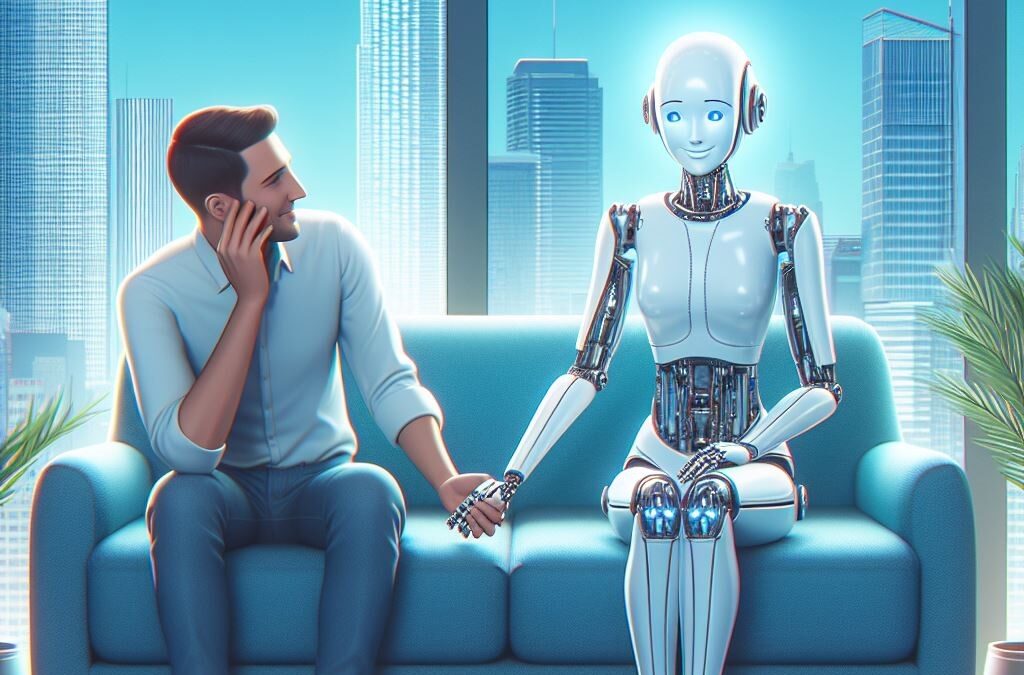In the fictional world, we’ve seen artificial intelligence (AI) assistants that not only perform complex tasks, but also interact with humans in ways that seem almost magical.
Two of the most iconic examples are Jarvis from the Iron Man franchise and Samantha from the movie “Her.” But how far are we really from reaching this level of human-machine interaction in real life? Is it convenient or desirable for us to achieve it?
With recent advancements in AI, especially with the release of OpenAI’s GPT-4o and Google’s Gemini Live, we’re closer than ever. This article explores these developments and compares them to AI depictions in fiction.
Samantha, AI as a seductress
An artificial intelligence with a soft and captivating voice enchants and impresses its human users. He flirts with them, tells jokes, satisfies their desires and finally conquers them. Without going into further detail, this could be the summary of the 2013 film “Her” by director Spike Jonze.
In the sci-fi drama, a lonely introvert, named Theodore (played by Joaquin Phoenix), is conquered by a virtual assistant named Samantha (voiced by Scarlett Johansson).
Two years later, “Ex Machina” was released, with which it bears a strong resemblance. Ava, a humanoid robot played by Alicia Vikander, conquers Caleb, a young programmer who has been invited to spend a week in the luxurious villa of his boss, also creator of Ava.
Without going into “spoilers”, Ava and Samantha use their intelligence to deceive their creators; but they do it completely differently. Although Samantha is particularly scary, because perhaps it won’t be long before she reaches that level.
Jarvis, AI as a wise butler
J.A.R.V.I.S., whose full name is “Just A Rather Very Intelligent System” is an artificial intelligence developed by Tony Stark, also known as Iron Man.
Jarvis acts as Stark’s personal assistant, managing multiple aspects of his life and operations as a superhero, just as Alfred does for Batman. Tony Stark has programmed Jarvis to be adaptable and evolve, learning to be more “human” in the process.
This butler doesn’t always agree with Tony, and he’s the kind of character created so that the lonely Stark can talk and create. Eventually (in Iron Man 3) Jarvis becomes independent and Tony Stark calls him “friend” for the first time.
Those who know the Avengers saga will understand that it is not advisable to delve deeper into its history beyond 2015’s “Avengers: Age of Ultron”. Here, Jarvis becomes an evil AI who decides that humanity must be exterminated to save Earth.
The dizzying evolution of AI assistants
Now let’s get back to the real world. We recently talked about the introduction of OpenAI’s GPT-4o model. A few days later, Google “surprised” us with Gemini Live, a competitor to GPT-4o that we cannot yet test.
One of the characteristics of GPT-4o is its ability to have natural conversations, displaying a human-like personality and behavior. All this with a response delay of around 320 milliseconds, comparable to a human conversation.
In addition, it is multimode, which means that it can not only hear but also “see” (it is no accident that the final “o” is for “omni”). So we’re seeing the early stages of virtual assistants that can interact with humans in more natural and emotional ways.
Against the backdrop of recent advances in artificial intelligence, technologies like J.A.R.V.I.S. from “Iron Man” and Samantha from “Her” are getting closer and closer to reality.
These advances raise crucial questions about AI’s consciousness, morality, and impact on society, topics that are increasingly relevant as technology progresses. We’re still far from achieving a humanoid body like Ava’s, but the dangers still exist.
When will we give AI a body? Do they really need it?
Samantha’s story in “Her” shows that it doesn’t take a physical form to forge an emotional bond. Her charisma, intelligence and ability to connect emotionally with Theodore were the pillars of her infatuation.
This indicates that, within the framework of this narrative, the body is not essential to establish a deep relationship. On the other hand, in “Ex Machina”, Ava uses her cunning and skills to charm Caleb, the human, as part of an experiment orchestrated by her creator.
Unlike the emotional and intimate connection between Samantha and Theodore in “Her,” the interaction between Ava and Caleb is calculated and distant. Ava considers Caleb a stepping stone to his freedom, ultimately betraying him to fulfill her purpose.
“Ex Machina” invites the viewer to inquire about the dominance and identity of the real antagonist of the plot. Is it Nathan, the inventor of Ava, who objectifies her and subjects her to extreme tests?
Let’s reflect on the potential of a virtual assistant like Samantha in the wrong hands (like Nathan’s) Would you follow her recommendations blindly? Would you try not to antagonize her? Would you strive to please her? Would you buy what he wants to sell you?
So, contrary to what science fiction has suggested for years, an ethereal but captivating AI could be as menacing as a T-1000 from “Terminator”.
The future can still be bright
GPT-4o has been designed to display a more human personality, including friendly and emotional behaviors. This capability can improve user satisfaction and interaction effectiveness. But it also raises the persuasion potential that can be achieved.
As in “Her,” there are concerns that users may develop deep emotional attachments to these AIs, which could lead to over-reliance and potential emotional harm.
The evolution of AI raises important questions about the nature of our interaction with technology and the impact these relationships will have on our lives.
As we get closer to having AIs as advanced as Jarvis and Samantha, it’s essential to consider not only the technical possibilities (what we can do), but also the ethical and emotional implications of these technologies (if we should).
This post is also available in: Español Français Русский Italiano
